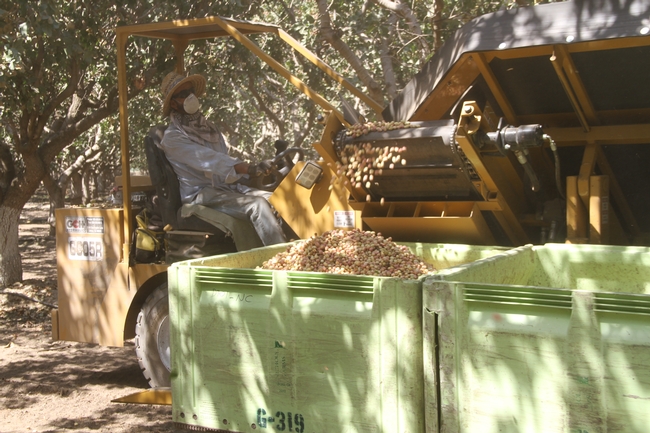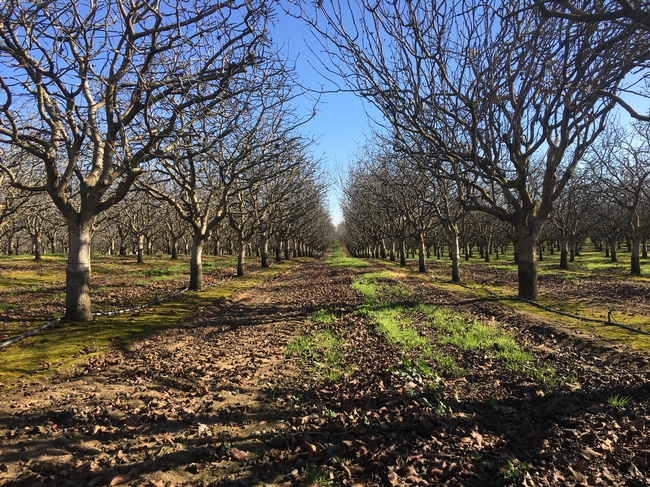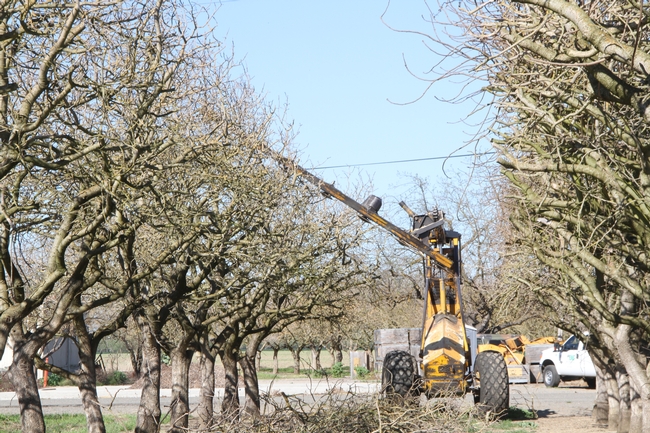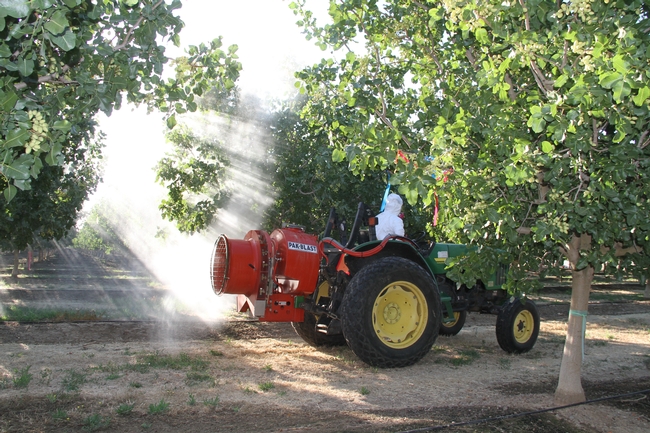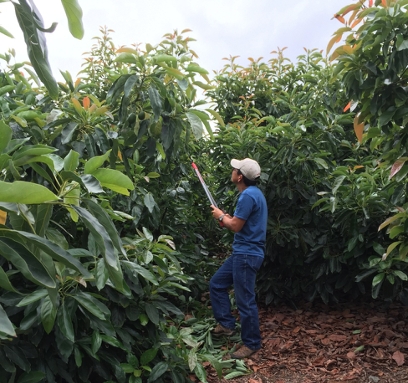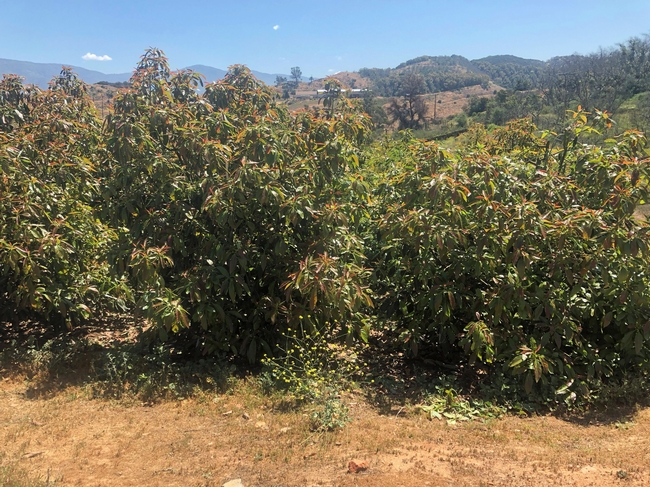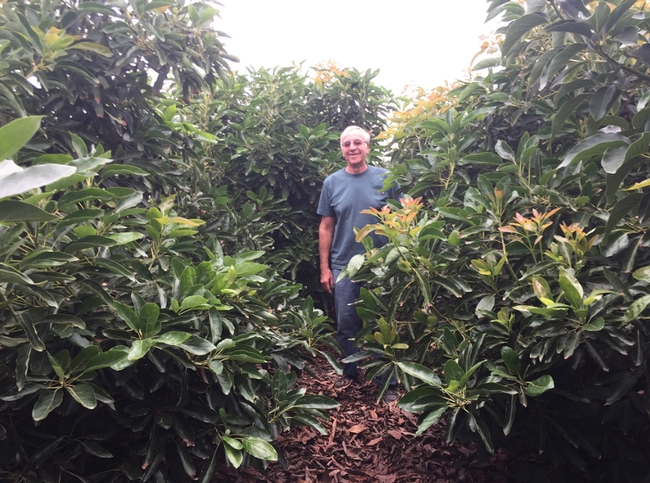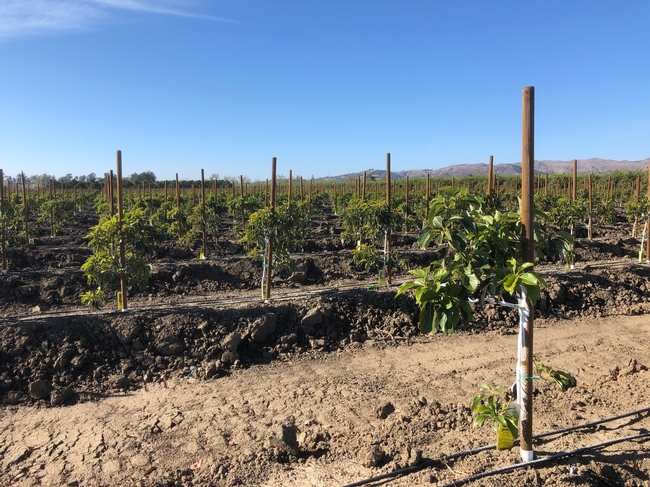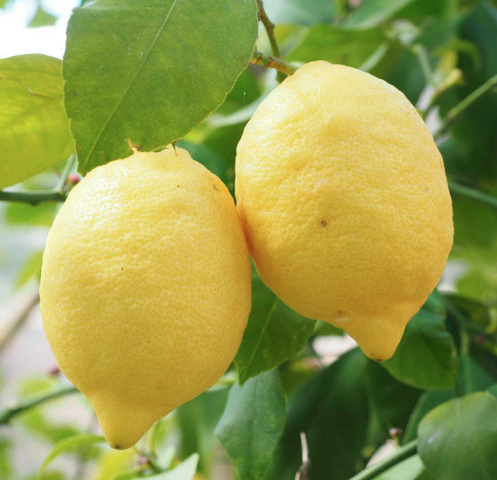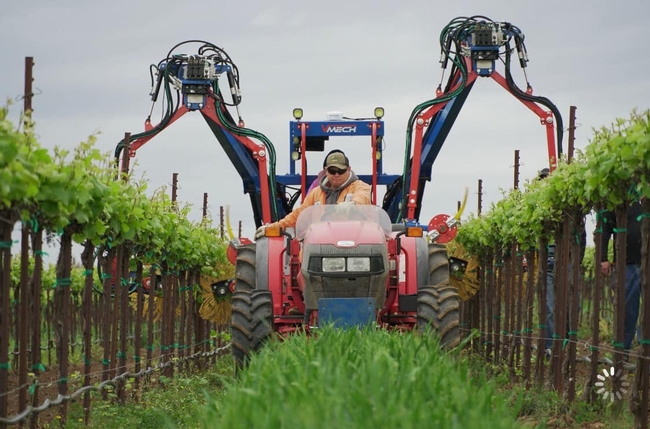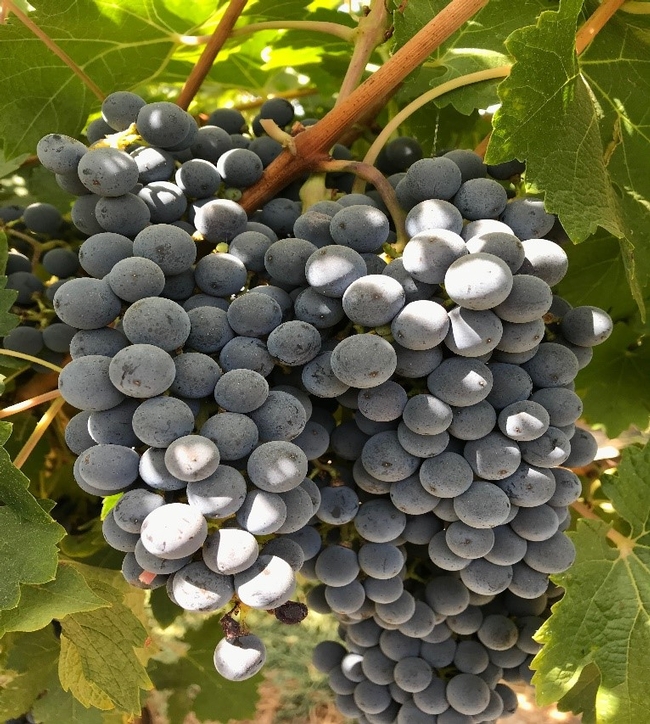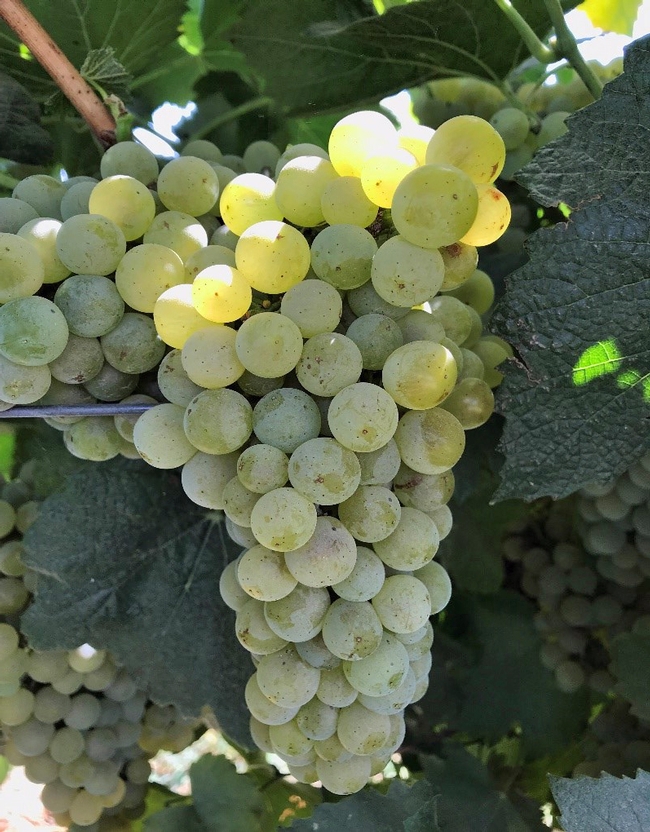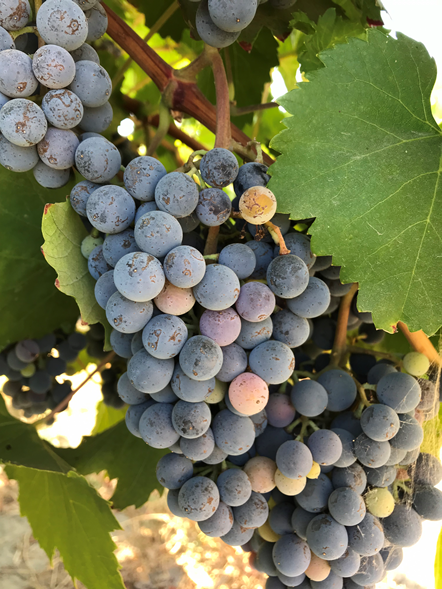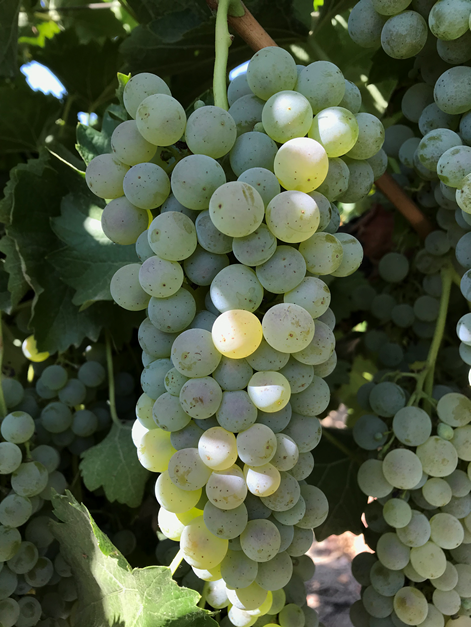Posts Tagged: Agricultural Issues Center
Pistachio production costs outlined in UC study
The popularity of pistachios as a healthy snack continues to drive demand. California's pistachio crop was valued at $1.94 billion in 2019, according to the California Department of Food and Agriculture.
For growers considering planting an orchard, the costs and returns of establishing and producing pistachios in the southern San Joaquin Valley are outlined in a new study by UC ANR's Agricultural Issues Center, UC Cooperative Extension and the UC Davis Department of Agricultural and Resource Economics.
“New growers use this information to create their budget for production loans for their bank,” said Jeffrey Gibbons, plant manager of Setton Pistachio of Terra Bella. “Owners use this information so they can be assured their farm managers are not overcharging them for farming costs. Farm managers use this information to see how they compare to the industry. Setton Pistachio uses this information to project budgets for future planting scenarios.”
UC Cooperative Extension specialists and farm advisors routinely refer people interested in planting pistachios to the cost study.
“I use this every time I have a new grower,” said Louise Ferguson, UC Cooperative Extension specialist in the UC Davis Department of Plant Sciences and co-author of the study. “It not only gives a good estimate of establishment and production costs, and projected net returns, but ensures no details are missed in planning. It is an invaluable template for pistachio production.”
Elizabeth Fichtner, UC Cooperative Extension orchard systems advisor for Kings and Tulare counties, agreed. “The cost study documents are one of the first resources I assemble for new growers.”
The new study estimates the costs and returns of establishing and producing pistachios using low-volume drip irrigation in the southern San Joaquin Valley. The hypothetical orchard is planted at 128 trees per acre, with an expected life span of 40 years.
The authors describe the assumptions used to identify current costs for pistachio establishment and production, material inputs, cash and non-cash overhead and a ranging analysis table, which shows profits over a range of prices and yields.
"Pistachio growers, potential future growers, land leasers, appraisers and loan officers benefit from detailed and current information included in the studies,” said Craig Kallsen, UCCE citrus and pistachio farm advisor for Kern County.
Gibbons said, “Setton Pistachio refers potential growers to this information as they determine if they want to plant pistachios. Setton Pistachio appreciates this information if it is current. If it is too old, it is not reliable, and there is no other good source for unbiased pistachio development information.”
For a grower, deciding not to plant pistachios based on information in the cost study can be just as economically valuable as deciding to plant pistachios based on the cost study, said Kallsen.
“The information in the cost study can prevent a grower from making a million-dollar mistake by planting a crop that is not suitable for their soil, water availability or for an economic reason not related to crop environment/adaption suitability such as length of time to first harvest or high cost of establishment,” he said.
Reliable estimated costs for a crop grown mostly in California may be hard to find from a source other than UC. This study was co-authored by 17 UCCE farm advisors and specialists and a pomology professor at California State University, Fresno, with input from growers.
“This study summarizes the knowledge learned and used to build California's pistachio industry from 40,000 acres in the 1970s to over 400,000 acres and a 1.1-billion-pound crop in 2020,” Ferguson said.
The new study, “Sample Costs to Establish and Produce Pistachios, Low-Volume Irrigation, San Joaquin Valley South - 2020” can be downloaded for free from the UC Davis Department of Agricultural and Resource Economics website http://coststudies.ucdavis.edu. Sample cost of production studies for many other commodities are also available on the website.
“UC cost studies are always something I alert potential growers to when they are considering whether to plant an orchard,” said Phoebe Gordon, UC Cooperative Extension orchard crops advisor for Madera and Merced counties. “New growers have expressed to me a few times that they find the cost study useful.”
For an explanation of calculations used in the study, refer to the section titled Assumptions. For more information contact Donald Stewart, University of California Agriculture and Natural Resources, Agricultural Issues Center, Department of Agricultural and Resource Economics, at (530) 752-4651 or destewart@ucdavis.edu. To discuss this study with a local UC Cooperative Extension advisor, find the UC Cooperative Extension office in your county at https://ucanr.edu/About/Locations.
New avocado study outlines costs and returns of high-density plantings
Growers considering producing avocados in San Diego County with high-density plantings now have help to determine the economic feasibility. A new study on the costs and returns of establishing and producing avocados in San Diego County has been released by UC Agriculture and Natural Resources' Cooperative Extension, UC Agricultural Issues Center and the UC Davis Department of Agricultural and Resource Economics.
Avocado has been one of the prominent crops produced in Southern California since the early 1950s. California avocado production peaked in 1987-88 with about 76,300 acres. San Diego had been the leading producer accounting for about 60% of the acreage.
“Beginning in the early 1980s, there has been a continuous decline of acreage and production of avocados in San Diego County, said Etaferahu Takele, UC Cooperative Extension farm management advisor for Southern California and co-author of the study. “This is mainly because of the expansion of urban development that has increased the cost of producing the crop and especially the cost of water, reaching to up to $2,000 per acre feet in 2020.”
High-density planting increases profitability of avocado production given there is suitable land for high-density orchard development.
Although the cost of water accounts for 44% of the total production cost in the high-density planting, the water cost is proportionally less than in the conventional planting of 145 trees per acre when distributed over a higher yield per acre, the authors write.
Their cost analysis describes production operations for avocados planted at 430 trees per acre, with an expected life span of 40 years. The study includes a detailed summary of costs and returns and a profitability analysis of gross margin, economic profit and a break-even ranging analysis table, which shows profits over a range of prices and yields. Growers can identify their gross margin and returns to management based on their yield and prices received.
Input and reviews were provided by a UC Cooperative Extension farm advisor and grower cooperators in San Diego County. The authors describe the assumptions used to identify current costs for avocado establishment and production, material inputs, cash and non-cash overhead.
The new study, “Avocado Establishment and Production Costs and Profitability Analysis in High Density Planting, San Diego County-2020,” can be downloaded for free from the UC Davis Department of Agricultural and Resource Economics website at http://coststudies.ucdavis.edu and UCCE Riverside County Farm Management website at https://ucanr.edu/sites/Farm_Management/Costs_and_Returns. Sample cost of production studies for many other commodities are also available on the websites.
For additional information or an explanation of the calculations used in the studies, refer to the “Assumptions” section of the report or contact Takele at (951) 683-6491 Ext. 243 or ettakele@ucanr.edu or Donald Stewart at the UC Agricultural Issues Center at destewart@ucdavis.edu.
UC ANR study outlines costs and returns of producing lemons in Southern California
A new study on the costs and returns of establishing and producing lemons in Ventura County has been released by UC Cooperative Extension in Southern California and UC Agricultural Issues Center, both part of UC Agriculture and Natural Resources.
“Coastal agriculture is always in transition and as strawberries and vegetables become less profitable due to markets and labor availability, lemons have returned as a potentially profitable alternative to those crops,” saidBen Faber, UC Cooperative Extension farm advisor for Ventura County and coauthor of the study.
California lemon acreage was at roughly 47,000 acres in 2018-19, of which Ventura County accounts for 31%, according to the 2019 Ventura County Crop Report. Ventura County was growing lemons on 14,407 acres in 2019.
“The profitability of lemon production depends on the price of land,” said Etaferahu Takele, UC Cooperative Extension farm management advisor for Southern California, another coauthor of the study. “If the price of land continues in its current trend, it could be prohibitive for new entrants to make a profit and limit further expansion of lemon production in the county.”
Their cost analysis describes production operations for Eureka lemons on macrophylla rootstock, which are planted at 155 trees per acre with an expected life span of 40 years.
The study includes a detailed summary of costs and returns and a profitability analysis of gross margin, economic profit and a break-even ranging analysis table, which shows profits over a range of prices and yields.
Input and reviews were provided by Ventura County farm advisor and grower cooperators. The authors describe the assumptions used to identify current costs for lemon establishment and production, material inputs, cash and non-cash overhead.
The new study, “2020 - Sample Costs to Establish and Produce Eureka Lemons in Ventura County,” can be downloaded for free from the UC Davis Department of Agricultural and Resource Economics website at http://coststudies.ucdavis.edu and the UCCE Riverside County Farm Management website at https://ucanr.edu/sites/Farm_Management/files/338947.pdf. Sample cost of production studies for many other commodities are also available on the websites.
For additional information or an explanation of the calculations used in the studies, refer to the section of the report titled “Assumptions” or contact Takele at (951) 683-6491 Ext. 243 ettakele@ucanr.edu or Donald Stewart at the UC Agricultural Issues Center at (530) 752-4651, destewart@ucdavis.edu.
For information about production of lemons in Ventura County, contact Faber at bafaber@ucanr.edu.
UC releases new cost studies for mechanized winegrape production
New studies provide details about trellis type, planting density, cost and potential benefit of vineyard mechanization
UC Agriculture and Natural Resources' Agricultural Issues Center has released four new studies detailing the costs and returns of wine grape production in the southern San Joaquin Valley. All four cost studies illustrate the cost and benefit of nearly full mechanization on wine grape production.
The studies estimate the cost of establishing a vineyard and producing wine grapes, focusing on four wine grape varieties – Cabernet Sauvignon, Chardonnay, Rubired and Colombard.
“Those studies take into consideration mechanical pruning, leafing, shoot thinning, and harvest on a typical wine grape vineyard with the average production level for this region,” said George Zhuang, UC Cooperative Extension viticulture advisor in Fresno County.
“With farming labor becoming more scarce and expensive, growers will opt to transition into more mechanization,” Zhuang said. “These studies provide detailed information about the trellis type, planting density, cost and potential benefit of vineyard mechanization. Based on these studies, fully implemented mechanization reduces the production cost from $3,000 to $2,500 per acre and that represents 17% cost reduction. This information will ultimately help growers to guide their production practices to more profitable and competitive ways under the new era of farming labor.”
Wine grape growers should look at the costs, particularly expenses associated with mechanization, Zhuang said.
“The investment to purchase and own equipment can be high,” Zhuang said. “Fortunately, it is easy to find a contractor in this region to perform certain vineyard tasks, if the initial investment to purchase equipment is prohibitive.”
Numerous studies, including UC studies, have confirmed the benefits of vineyard mechanization to grape and wine quality with lower production costs.
“It is a win-win-win situation,” Zhuang said. “Growers can improve their farming margins, wineries and juice processing plants can get reliable and higher quality grapes and juice from farms, and average consumers can enjoy better wine and more healthy grape products at an affordable price.”
The studies are based on 200-acre farms with the vineyard established on 40 acres using two types of trellis systems – quadrilateral cordon system and bilateral cordon system. In addition to regular grape production expenses – such as irrigation, fertilization and pest control – the researchers broke out the differences between machinery costs and hand labor hours required for thinning, pruning and harvesting for each variety.The prices for labor, materials, equipment and custom services are based on October 2019 figures.
The California minimum wage law will gradually decrease the number of hours employees can work on a daily and weekly basis before overtime wages are required. For more information and to view the California minimum wage and overtime phase-in schedules visit aic.ucdavis.edu.
Input and reviews were provided by UC Cooperative Extension farm advisors, specialists, grower cooperators and other agricultural associates. The authors describe the assumptions used to identify current costs for wine grape establishment and production, material inputs, cash and non-cash overhead. A ranging analysis table shows profits over a range of prices and yields.
The new studies are:
- 2019 - Sample Costs to Establish and Produce Winegrapes in the Southern San Joaquin Valley – Chardonnay Variety
- 2019 - Sample Costs to Establish and Produce Winegrapes in the Southern San Joaquin Valley –Cabernet Sauvignon Variety
- 2019 - Sample Costs to Establish and Produce Winegrapes in the Southern San Joaquin Valley – Rubired Variety
- 2019 - Sample Costs to Establish and Produce Winegrapes in the Southern San Joaquin Valley – Colombard Variety
All four winegrape studies can be downloaded from the UC Davis Department of Agricultural and Resource Economics website at http://coststudies.ucdavis.edu. Sample cost of production studies for many other commodities are also available on the website.
For additional information or an explanation of the calculations used in the studies, contact Donald Stewart at the Agricultural Issues Center at (530) 752-4651 or destewart@ucdavis.edu.
For information about local grape production, contact George Zhuang, UCCE viticulture advisor for Fresno County, at gzhuang@ucanr.edu; UCCE viticulture specialist Matt Fidelibus at mwfidelibus@ucanr.edu; UCCE viticulture specialist Kaan Kurtural at skkurtural@ucdavis.edu; Karl Lund, UCCE viticulture advisor for Madera, Merced and Mariposa counties, at ktlund@ucanr.edu; or Gabriel Torres, UCCE viticulture advisor for Kings and Tulare counties, at gabtorres@ucanr.edu.
Eating healthy on a limited budget is possible, but any cuts in SNAP or rise in food costs make it harder
The affordability of healthy food is often cited as a barrier to low-income families eating nutritious meals. A new study published in the Journal of Nutrition Education and Behavior found that with menu planning and access to stores selling items in bulk, the average daily cost for serving healthy meals to a family of four was $25 in 2010 dollars. This cost was consistent with the US Department of Agriculture (USDA) low-income cost of food meal plan, but higher than the cost of the USDA Thrifty Food Plan. The Thrifty Food Plan is the meal plan used by the USDA to determine food assistance benefits.
“This study determined the likelihood that families living in low-income households could create meals that meet the USDA dietary guidelines presented in MyPlate nutrition education materials,” said lead author Karen M. Jetter, Ph.D., of the UC Agricultural Issues Center, which is part of UC Agriculture and Natural Resources. “In addition to food cost, the other factors considered were access to stores, time for meal preparation, and whether the menus included culturally appropriate foods.”
Jetter also cautioned that any reduction in SNAP, the federal Supplemental Nutrition Assistance Program for people with qualifying low incomes, or increase in food costs would make it hard for economically vulnerable families to eat healthy foods.
This research was part of a larger study to train community members in research methods using community-based participatory research principles.
This project was conducted in collaboration with Northern Valley Indian Health, Inc, and the Mechoopda Indian Tribe of Chico Rancheria where 88 percent of the population surveyed lived in households with an income of less than or equal to $35,000 a year. The menus were created to feed a household with a father, mother, and children ages 7 and 10 with foods the Mechoopda Indian Tribe community liked to eat, met USDA guidelines for healthy eating, and had realistic portions. Menus did not rely on processed foods to reduce the amount of fat and salt in the family diet, were varied so the family would not become bored eating the same foods, did not always require hot meal preparation, and were affordable.
By working closely with the Mechoopda Indian Tribe community researchers, two-weeks of daily menus were developed using meal plans provided by the Mechoopda Indian Tribe community. Although these plans did not meet the nutritional guidelines every day, all categories achieved the recommended levels on average at the end of a two-week period.
“These menus showed that a healthy diet on a budget was achieved by balancing daily targets over two weeks, not every day. This focuses healthy eating on balance rather than being deprived,” said Jetter.
Once the menus were determined, the Mechoopda Indian Tribe community researchers visited 13 grocery stores in Chico to ascertain menu costs. The stores visited were within a 10-minute car ride of 76 percent of the Mechoopda Indian Tribe members and were classified as bulk supermarket, general supermarket, discount market, or specialty market such as a local co-op.
Both bulk and general supermarkets had the highest availability of the items needed for a two-week shopping list, whereas specialty and discount markets lacked as many as 52 of the items needed. Bulk and discount market baskets had the lowest average daily cost of $25, while the specialty market had the highest average cost of $39 per day.
One limitation of the study was the focus on the actual cost of food without considering transactional costs such as the time needed to plan menus, develop shopping lists, research store advertisements, and travel to the bulk supermarket that offered the lowest cost. All of these factors influence a family's ability to sustain a healthy eating plan.
“This research demonstrates that menus that meet USDA guidelines can be purchased by a family of four when shopping at a bulk supermarket, but any reduction in SNAP benefits or increase in food costs would make it difficult for these economically vulnerable families to maintain a healthy lifestyle,” stressed Jetter.
This project was part of a larger project funded by a National Institutes of Health grant.


